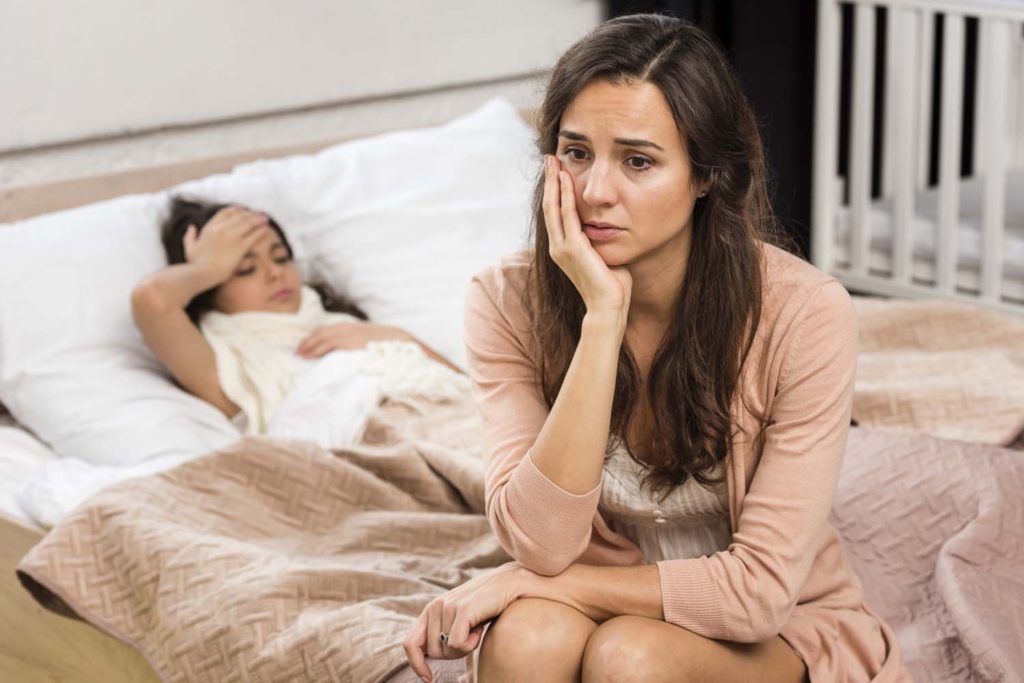Prior to discussing the dos and don’ts of what should be done whenever we observe that a child appears to be worried, it’s indeed critical to first comprehend the ideas of stress, panic, and anxiety symptoms.
Adolescents go through a broad spectrum of feelings, several of which are good and some of them are unpleasant. Among the most prevalent negative feelings are nervousness, nervousness, and panic.
How can we distinguish between anxiety and fear?
Anxiety is an emotion brought on by a danger that is undiscovered, anticipated, or incompletely understood, whereas fear is a feeling brought on by a situation that is recognized or comprehended. According to evolutionary psychology, the fear emotion has developed over time in order to defend and safeguard any community, ultimately ensuring the species’ existence. On the other side, anxiety shields a population from the potential of an approaching threat.
Anxiety disorders: what are t hey?
hey?
Anxiety disorders are psychiatric conditions where a kid exhibits overwhelming and abnormal feelings of dread that are out of context to the task or stressful situations they are facing and cause them to endure a great deal of distress and limitation, especially in biology, society, and academic performance.
What are the Prevalent Anxiety Disorders in the Children?
According to most of the studies carried out by several organizations, the common anxiety disorders are:-
- Generalized Anxiety Disorder.
- Separation Anxiety Disorder.
- Social Anxiety Disorder.
- Panic Disorder.
- Selective Mutism.
- Specific Phobias
How can parents support their kids in managing stress?
Here are some crucial things for parents and other caregivers to remember whenever noticing signs of anxiety in youngsters.
Do’s
- It is necessitated to seek professional assistance to treat the nervousness if the kid meets the criteria for a panic disorder condition, which could include pharmaceutical aid and psychotherapy.
- Instead of supporting prevention and management, promote gradual engagement in anxiety-inducing situations. Victims’ families and significant others must teach them that anxiety should only be eliminated by progressively exposing them to anxiety-provoking stimuli in a graduated and systematic approach, as this will prevent stress from developing but instead cause it to become habitual.
- Taking about the numerous emotions, both positive and negative, one can feel as well as assist the youngster in naming and recognizing the dread or anxious emotions.
- Assisting the youngster in recognizing the several bodily reactions that anxiousness triggers, such as accelerated heart rate, palms getting sweaty, breathing difficulties, and more.
- Trying to encourage the kid to pick up some fundamental breathing exercises such as Belly breathing.
- Assisting kids in connecting stimulation, personal opinions, thoughts, feelings, emotions, and bodily reactions.
Don’t
- Home accommodations are any actions taken by close relatives or friends to assist in avoidance or participate in traditions linked to anxiety and depression. As a result, anxiety feelings are maintained, and a person cannot truly experience their feelings. Accommodations in families have a long-term unfavorable effect on the anxiety treatment
- Encouraging your youngster to confront their most extraordinary triggering stimuli immediately instead of gradually, even without acquainting them with calming skills such as progressive desensitization, might overwhelm and frustrate kids from confronting their phobias.
- Denying a child’s anxiety-inducing reaction to a trigger and avoiding saying things like, “This seems absurd. That is not a huge deal at all. “Stop making shit up it,” “It’s all happening in your head,” and “If you do not, however, concentrate on it, it will fade disappear!” are common phrases. Make a comment along the lines of, “I understand and respect that you’re feeling uncomfortable right now. I am here if you need me; I know these things are frightening for you. Most likely, the worry region of the brain is taking control.
- According to research, kids’ anxiety is correlated with parental nervousness. Parents must receive some kind of teen anxiety treatment for their anxiety since, if left untreated, parental worry can lead to the adoption of an aggressive, neglectful, or indulgent parental involvement, all of which have been strongly associated with child anxiety. Stress in children can be brought about by cold parenting and excessive parental supervision. Therefore, to understand how to establish an approach to parenting that would lessen kids’ anxiety, parents must participate in parent-management training.


 hey?
hey?
